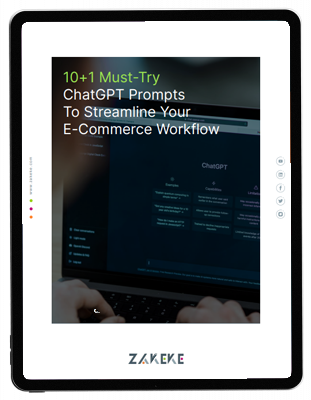The world is more connected and digitally equipped, thanks to the rapid digital transformation. In the growing digital age, eCommerce continues to grow with some exciting eCommerce growth trends.
According to Statista, the online shopping market will see significant growth in yearly revenue, and that’s forecast to be worth $4.18 trillion in 2024 in various categories.
The eCommerce market and industry are constantly evolving, and the best part is that it has positive growth, increased revenue, and higher per-user spending.
Source: Statista
With each passing year, the new-age shoppers are setting expectations and demand higher, as well as increasing the average revenue per user. In fact, the average revenue per user will also experience a spike in the coming year, 2024, as forecasted in a study by Statista.
eCommerce brands know that today, customers have the liberty to shop anywhere, at any time, right from their smartphones. If done right, businesses know that the future of eCommerce is here with the exponential demand for online shopping sites and applications. eCommerce businesses must exceed customer expectations to get ahead in the competitive space and stand any chance of demanding customers’ attention.
But how? What are the upcoming eCommerce trends?
eCommerce trends help global businesses to stay ahead in an eCommerce growth curve and find room to boom. Let’s understand eCommerce trends in 2024 as we head into 2024 after this festival season.
1. Augmented Reality (AR) for eCommerce
The rapid growth of eCommerce showcases a significant change in how people shop. Unlike the traditional in-store shopping experiences, eCommerce shopping faces a common challenge while decision making (or preciously informed decision making) for usual hiccups in gaining traction to digital products into the real world.
Augmented Reality (AR), an advanced technology that blurs the line between digital and real, enables shoppers to see the real aspect of digital products by placing digital images of products to give an illusion of real-life experience in a more immersive and interactive way possible. Customers can virtually try on outfits or visualize furniture in their home interiors and make informed decisions.
Technologies like Augmented Reality (AR) are shortening the consumer decision-making process and enabling faster conversion rates. The trend is surely going to mature with time and help people with better shopping experiences.
2. Voice Commerce for online shopping
2024 will bring one of the most exciting upcoming e-commerce trends when customers do shopping using voice commands from their smart devices that are interpreted by Natural Language Processing (NLP) technology to carry out instructions or appropriate actions.
Though it is still in the very early stage of becoming a sophisticated way of shopping, many eCommerce brands have started investing in it. It could be similar to voice search or via virtual assistants like Amazon’s Alexa, Google Home, or Apple’s Siri. It could be a convenient way of online shopping without using your hands.
3. Personalized experience in eCommerce
Brand loyalty, better connection, and greater retention are the by-products when eCommerce brands go deeper with customer connections. Customers are predominantly looking for personalized experiences, and for this experience, they are prepared to share their demographics and data to dig deeper.
Personalized experiences will dominate the eCommerce growth trends. A personalized experience can elevate the customer experience (CX) multifold, unlike a “one-size-fits-all’ strategy. eCommerce applications require a flexible technology with minimal total cost of ownership (TCO) to accommodate personalized offerings. Thanks to customer insights and advanced eCommerce technologies like GraphQL Readability, there are multiple tools in the market that help with personalization at every stage and channel.
The advanced tools designed to support eCommerce personalization through the online store are many. They bring the capability to add or elevate extensive features into an eStore without changing the entire application with zero or minimal downtime.
An accurate example is Zakeke’s Product Customizer: the easiest tool to start offering product customization in seconds, without any IT or design skills. Another example for the Magento store owners is the MageDelight Magento 2 – Price per Customer extension. It allows personalized discounts and lucrative pricing for customers and enables eCommerce stores to gain loyalty and strategically increase customer spending.
Through tools and extensions like these ones, you can take your personalization game to the next level.
4. Pricing pressure model for eCommerce
Open eCommerce is a challenge for brands when customers can check prices, compare them, and then switch to the best pricing, even for a slight margin in the pricing model. The pressure toward competitive pricing is even greater when pricing changes faster than ever.
To outperform the competition, an eCommerce platform needs to offer individual experiences, special offers, and dynamic bundle products in no time before customers switch to another site. eCommerce brands need flexible, scalable, and highly customizable solutions to handle the dynamic pricing model for customer profiling and interest.
The fast-food chain brand McDonald’s uses customer psychology and decoy pricing to influence customer decision-making. It offers them a lucrative price just below the highest priced product for comparison for quick buying in bundle offers.
eCommerce brands can use this strategy in their stores and offer such dynamic pricing for individual customers. Via customer segmentation and buyer persona analysis, hyper-personalization is possible with tools that allow custom pricing for different customer groups.
5. Predictive Analytics for eCommerce
The idea of preparing well in advance is something an eCommerce business needs no introduction. The festival season always brings a surge in new visitors, higher average customer value (ACV), and increased sales.
Are you ready for eCommerce holiday shopping? Yes, this question always haunts eCommerce brands and, of course, puts doubt over their readiness. Predictive analysis with the help of customer data, industry insights, and technology experts can only save your eCommerce.
Predictive analysis uses machine learning to forecast future demands, trends, and customer buying behavior to sell more without disruption. eCommerce businesses must recognize this trend in 2024.
6. Customer data privacy for eCommerce
It is true that, on one hand, customers are actively looking for a hyper-personalized shopping experience from their favorite eCommerce store with convenience and tailored recommendations using data-driven insights.
Additionally, customer data like name, birthday, phone number, email address, and other details help brands retain customers, promote recurring purchases, and increase cart value. Whereas some customers are afraid to lose their personal data with the growing concern looming over data privacy rights and security threats.
In general, customers need to be made aware of how their data is collected and utilized, raising apprehensions about potential risks. eCommerce brands need to ensure and convey the perfect balance between the use of personal data for personalized experiences and safeguarding customer privacy.
Customer data insights are not only beneficial for brands but also for customers too. Customer Data in eCommerce helps businesses develop innovative pricing strategies for every product rather than simply relying on competitors’ prices. Most importantly, analyzing customer data helps in forecasting product demands.
7. Sustainability by eCommerce
Customers are more aware and conscious about their shopping and purchasing habits with respective impacts on the environment and society. Due to the sustainability concern, there has been a recent spike in recycled packaging and awareness campaigns by eCommerce brands.
Through responsible sourcing, minimized waste, and efficient logistics, eCommerce businesses spearhead a profound change in reducing carbon footprints. This paradigm shifts not only fosters environmentally friendly practices but also cultivates a mindset of ethical consumption. By embracing renewable energy, eco-friendly packaging, and mindful production methods, online businesses exemplify the power of sustainable eCommerce practices, and shoppers appreciate it.
eCommerce brands show commitment to sustainability makes a huge difference in customer loyalty; it sets the stage for a more conscientious and environmentally aware future. Significantly influencing both eCommerce businesses and consumers towards a more responsible tomorrow, which is a great sign. Sustainable shopping practices are an essential trend for eCommerce brands in 2024 to minimize their carbon footprint.
Conclusion
In conclusion, eCommerce is an ever-evolving landscape where brands must meet customer expectations, and following the eCommerce growth trends is the key to success. The future of eCommerce lies in these trends to stay ahead of the competition and remain competitive. Interestingly, these trends also evolve with time and bring new advancements.
In 2024, we anticipate continued growth in eCommerce with Augmented Reality (AR), Voice commerce, personalized experience, predictive analytics, sustainability, etc., where eCommerce businesses need to stay ahead of these trends and deliver more to customers.
Carefully observing these trends can help brands and marketers prepare strategies and embark on a journey of more profitability. eCommerce businesses can use these trends to overcome the obstacles and move ahead further on the growth path to win new customers, gain loyalty, earn higher revenue figures, and ultimately fulfill their desire to build the future of eCommerce.

Sagar Khandekar
SEO Expert
Sagar Khandekar is a Senior SEO Executive at MageDelight with over 8 years of experience in digital marketing. His core expertise lies in organic search, content marketing, and technical SEO. He has a keen interest in eCommerce, Magento, the latest trends, strategies, and tools. Outside of work, he enjoys playing FIFA and watching different regional movies.














